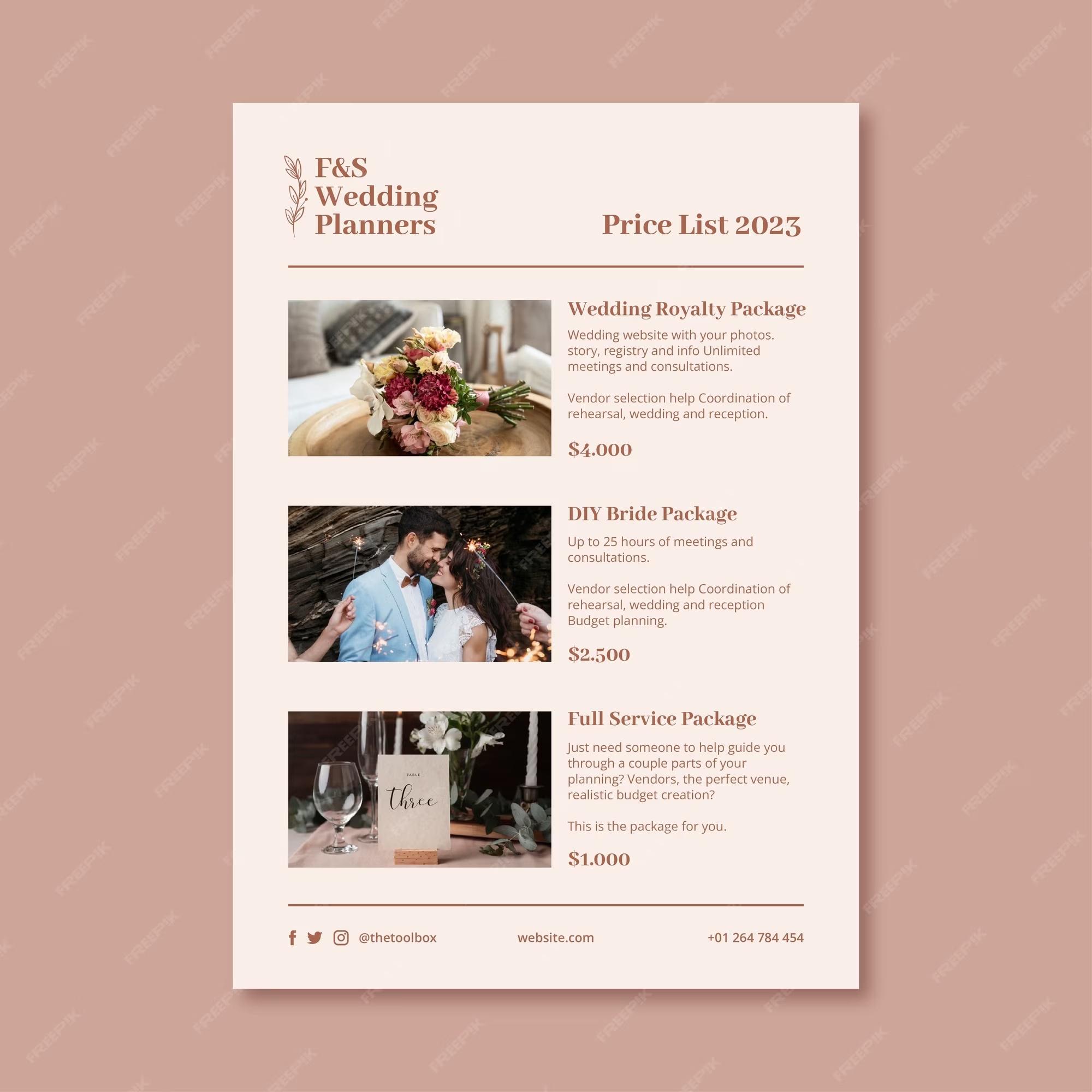As a proficient wedding planner, one of the critical decisions you’ll need to make is how to price your services adequately. This decision can significantly impact your business and your clients’ satisfaction. This comprehensive guide will explore the different pricing models that you can adopt, the factors to consider, and how to evade common pricing pitfalls.

Image Source: FreeImages
1. Understanding Your Pricing Models
Flat Fee Pricing
The flat fee pricing model is one of the most prevalent ways wedding planners price their services. Here, you charge a set fee for each package you offer, and this can be determined based on an hourly rate.
**Pros of Flat Fee Pricing:**
- It offers predictability for both you and your client.
- It eliminates the element of surprise in the final cost.
- It allows you and your client to focus solely on creating a memorable event.
**Cons of Flat Fee Pricing:**
- It may limit your earnings if the event requires more work than initially projected.
- It may overprice your services if the event requires less work than initially estimated.
Percentage-Based Pricing
This pricing model involves charging a portion of the total wedding budget. A typical starting percentage rate is 10-20%. For high-end luxury weddings, planners usually charge a rate of around 20%.
**Pros of Percentage-Based Pricing:**
- It aligns your earnings with the scale of the event.
- It may result in higher earnings for luxurious weddings.
**Cons of Percentage-Based Pricing:**
- It may be challenging to justify to clients.
- It may deter budget-conscious clients.
Hourly Rate Pricing
With this model, you charge an hourly rate for your planning services. The rate should reflect your experience and the complexity of the service provided. A common hourly rate can fall within $25/hr for a new planner and go upwards of $100+/hr for top event planners with amazing portfolios.
**Pros of Hourly Rate Pricing:**
- It ensures you are paid for every hour worked.
- It gives clients the flexibility to use your services as needed.
**Cons of Hourly Rate Pricing:**
- It may lead to uncertainty for the client about the final cost.
- It requires meticulous tracking of time spent on services.
Day-of Coordination Pricing
Day-of coordination services are popular for weddings where clients have already chosen their vendors and need assistance only on the wedding day. You can charge either a flat fee or an hourly rate for this service. This service’s pricing should reflect the event’s size and the preparation required to familiarize yourself with all aspects of the event.
**Pros of Day-of Coordination Pricing:**
- It offers a lower-cost option for clients who have already done most of the planning.
- It provides a clear scope of work for the wedding planner.
**Cons of Day-of Coordination Pricing:**
- It may limit your earnings if unexpected issues arise on the wedding day.
- It may not adequately compensate for the time spent familiarizing yourself with the event's details.
2. Factors Influencing Your Pricing Decision
Your Experience and Expertise
Your level of experience and expertise will play a significant role in determining your pricing. New planners may need to price their services lower than more experienced planners. However, as you gain experience and build a portfolio of successful events, you can justify higher prices.
The Complexity of the Event
The complexity of the event is another critical factor. A large, luxurious wedding with several moving parts will require more work than a small, intimate ceremony. Therefore, you should adjust your pricing to reflect the event’s complexity.
Your Overhead Costs
Overhead costs include expenses such as travel, communication, printing, supplies, and any temporary help you may need. These costs should be factored into your pricing to ensure you cover all your expenses.
The Market Rate
Understanding the market rate for wedding planning services in your area can provide a useful benchmark for your pricing. However, you should avoid underpricing your services to compete with other planners. Instead, focus on delivering exceptional value for your clients.
3. Best Practices for Pricing Your Services
Be Transparent with Your Clients
Transparency is crucial when pricing your services. Clearly outline what your charges cover and any additional costs the client may incur. This approach will help to build trust with your clients and avoid any misunderstandings later.
Regularly Review Your Pricing
Regularly reviewing your pricing will ensure that it remains competitive and reflects your current experience level, market conditions, and the cost of living. Don’t hesitate to adjust your prices if necessary.
Factor in a Buffer for Unforeseen Circumstances
When estimating the time and resources required for an event, always factor in a buffer for unforeseen circumstances. This buffer can help to cover any unexpected costs or additional work required.
4. Tipping for Exceptional Services
While tipping is not a standard practice for wedding planners, some clients may choose to tip for exceptional service. This tip, usually 10 to 20 percent of the total planning cost, is a sign of gratitude for going above and beyond to create a memorable event.
5. Avoiding Pricing Pitfalls
Avoid the temptation to undercut your competition by significantly lowering your prices. This strategy may attract more clients initially, but it can undervalue your services and lead to burnout. Instead, focus on demonstrating the value you provide and justifying your prices.
In summary, pricing your wedding planning services involves careful consideration of various factors. By understanding the different pricing models and factors influencing your decision, you can set prices that appropriately compensate for your work while providing excellent value for your clients.
Remember, the ultimate goal is to create memorable events for your clients. So, price your services in a way that allows you to do your best work. Happy planning!

